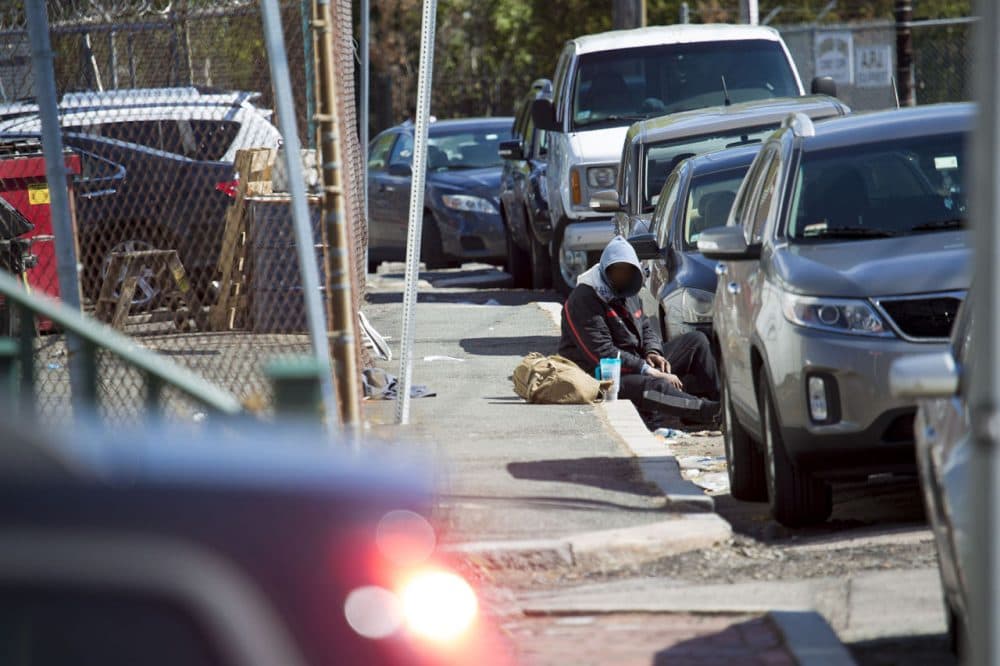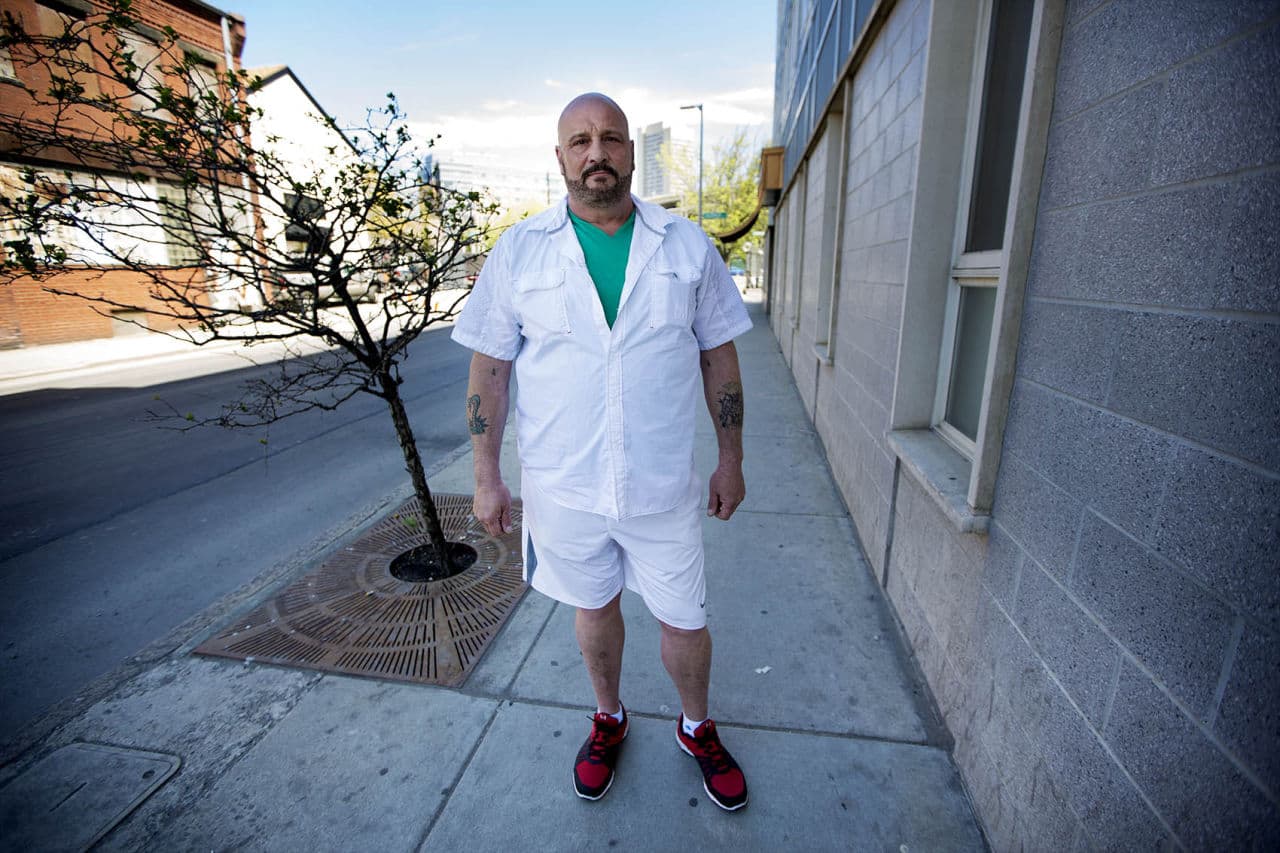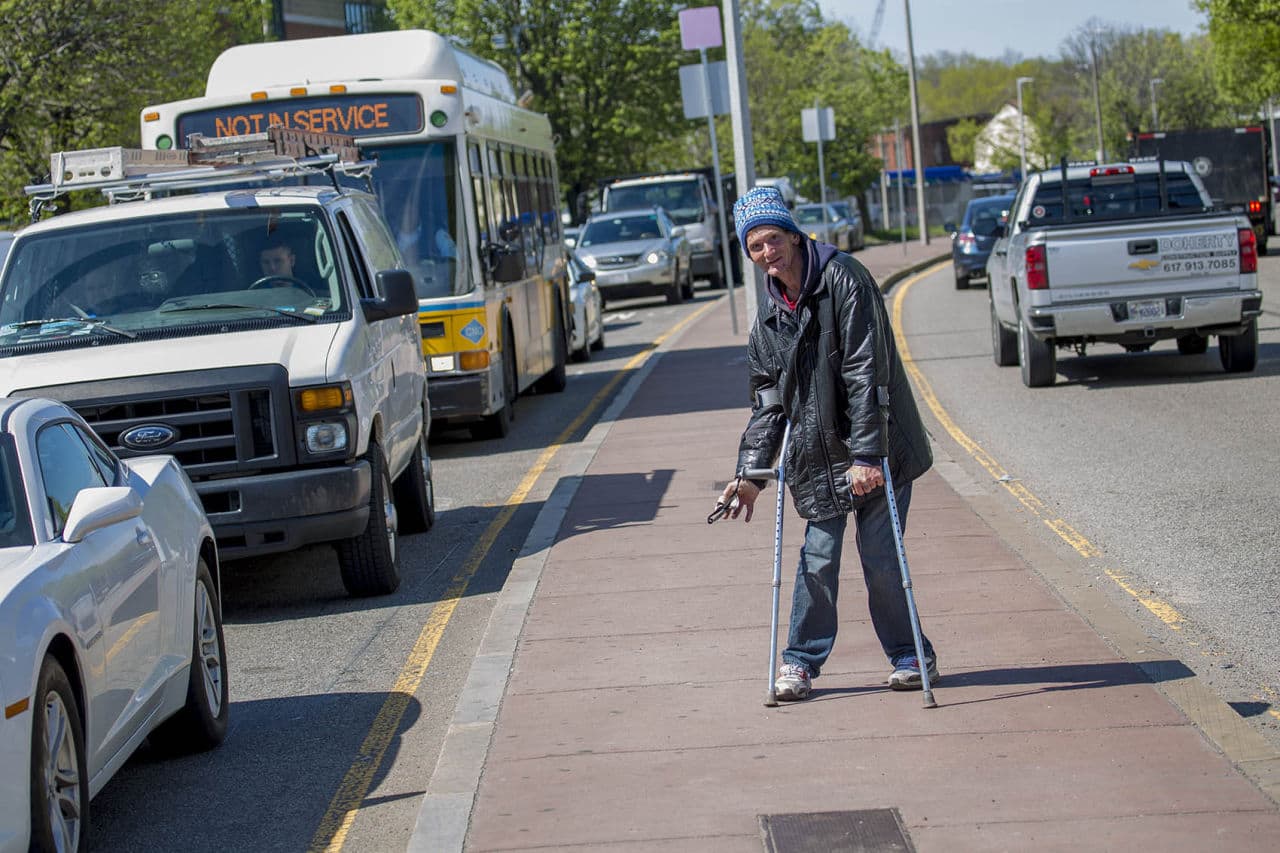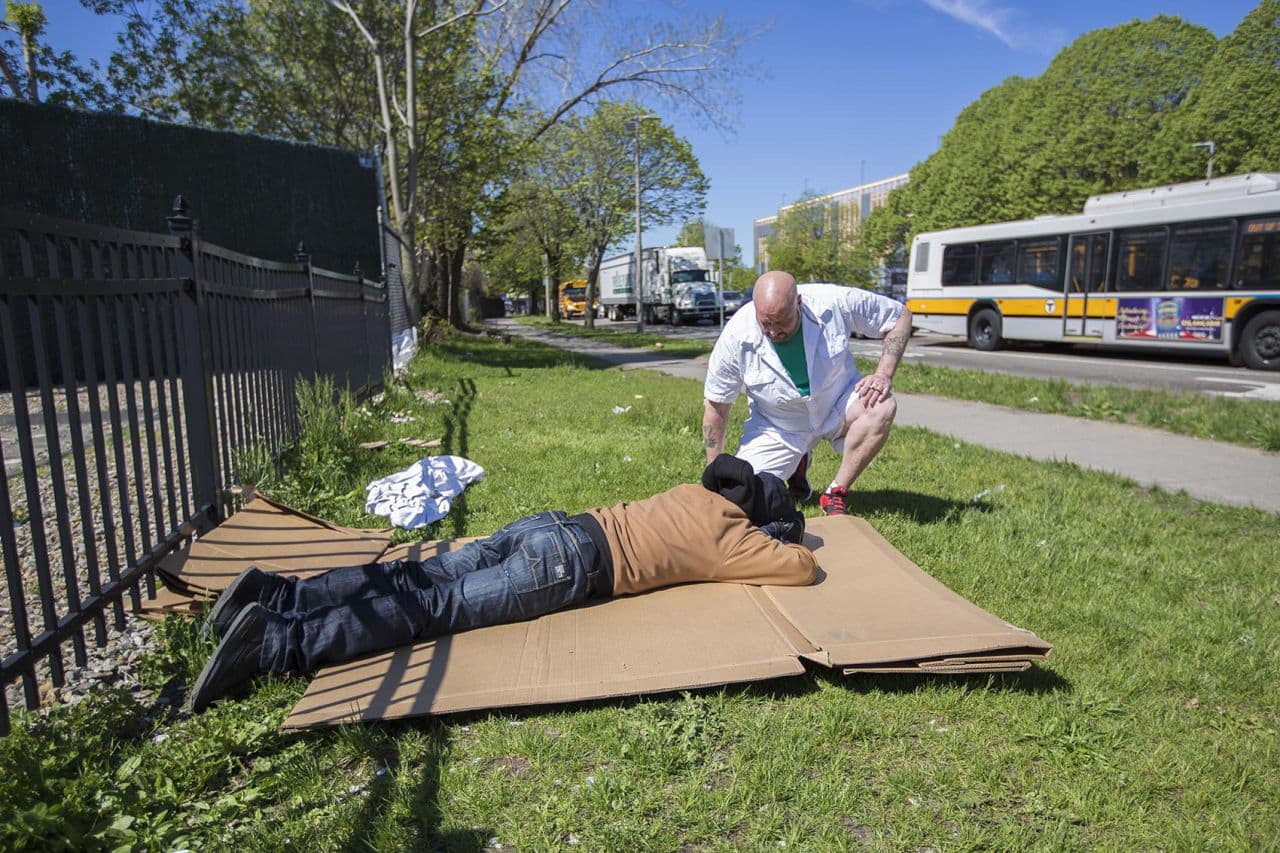Advertisement
State's Opioid Epidemic Is Vividly Seen On Boston's 'Methadone Mile'
Resume
The ravages of the state's opioid epidemic are perhaps nowhere more visible than in an area of Boston known as "Methadone Mile" -- a one-mile stretch of Massachusetts Avenue in the shadow of Boston Medical Center.
Fifty-year-old Vinny Pardini says the three methadone clinics, the homeless shelters and the drug treatment programs in the area have made it a hub of drug activity.
"This has to be the worst section of the city right now," Pardini says. "It's full of active addicts, using on a daily basis. I see it every single day."
Which makes it hard for Pardini, who has struggled with heroin use and lives at the recovery program in the neighborhood called Hope House. The residents call the street behind the house "needle street" because it's littered with the residue of drug use.
As Pardini walks down the street, he explains the debris along the pavement.
"There's a cap from a needle. That's an empty heroin bag right there," Pardini says, while warning me to avoid the discarded needles at our feet.

There are also at least three people we see sitting on curbs between parked cars, openly cooking and injecting heroin. They seem unfazed that we're walking by.
"They don't try to hide it at all, it's like they don't care," Pardini says.
He checks on a man sleeping on cardboard at the intersection of Massachusetts Avenue and Melnea Cass Boulevard. After several shakings, the man wakes up and assures Pardini that he's OK.
"A lot of them die right here," Pardini says. "In the last six months I've seen at least six to 10 fatalities from overdoses right here on this spot."
He points to a man standing in the median panhandling and yelling at the cars passing by. He's swaying on the two braces he's holding to walk.
"His name is Peter," Pardini says. "He's a crack user. He has multiple sclerosis and he has to walk with those two canes."
He's homeless and he comes out here every day and panhandles to get crack.

Peter — who didn't want to give his last name but agreed to be recorded and photographed — says he's been living on the streets and in shelters in this area for the past seven years.
"I started with the powder when I was like 11 years old," Peter, now 45 years old, says. "Then back in the '80s with the crack."
He says he stays in this area so he can support his drug habit. "It's easy," Peter says. "I can call the person, go meet the person somewhere, and then take a bus or something and I'm right back here."
Walking up Mass. Ave., not far from some rapidly gentrifying neighborhoods, at least a dozen people are congregated — many struggling to walk, some leaning on a fence, barely able to stand.
"It's called 'the nod,' " when they don't stand up straight, Pardini says. "[It comes] with the heavy methadone and heroin use."
Pardini sees some men exchange money and drugs, even though a cop stands about 10 feet away.
"They'll do it right in front of [the police]; they have no fear of them," he says. "Sometimes the police try to move them along. They'll move 20 feet, go across the street and come back."
The officer approaches the group and appears to tell them to leave the corner because they all start crossing Albany Street. One man stops in the middle of the street and seems to be unable to keep upright until one of the others holds him up to help him across.
"And you see, we're one block away from here is Boston University housing for their medical students," Pardini says.

Boston Mayor Marty Walsh says this area has had these problems for years. And he say the city is taking several steps to deal with the opioid epidemic, such as appropriating more than $1.5 million to deal with substance use issues and creating the nation's only municipal office dealing with drug addiction.
"We have a crisis of heroin in our city," Walsh says. "It's a difficult issue to address. We also need some willingness on behalf of the people addicted to be willing to go into treatment."
Pardini and more than a few others at Hope House believe that one solution would be having outreach workers on the streets, trying to persuade people to get treatment.
"We have got to talk to them and offer them something better," says Fred Newton, president and CEO of Hope House. "We need to keep talking even if they say no to treatment at first."
Hope House, which has 95 treatment beds and 22 units of subsidized housing, is believed to be the oldest independently run substance use treatment program in Boston. In the lobby is a framed photo of former Gov. Francis Sargent signing a 1971 law decriminalizing public intoxication.
Newton says the drug of choice has shifted from alcohol to opioids over the decades since Hope House began, but there's a similar psychology.
"An addict is really the most loving, caring person you'll ever meet," Newton says. "That's the reason that they're an addict. If the person was a selfish idiot that didn't care about anybody else, he'd have no reason to use. An addict is always just trying to live up to your standards. They're self-centered, not selfish."
Pardini has been at Hope House for six months after a 10-year heroin habit that started with prescription painkillers. But just a few weeks ago he found out that his drug use has caused irreparable damage.
"I have terminal cancer, and I don't want to give one day to numb my senses," he says. "I want to enjoy every day I have left. I want to feel the sun on my face. I don't want to be nodding in the corner and I don't want to give another dime to a drug dealer."
His cancer is caused by hepatitis C, which is typically from intravenous drug use.
"This drug doesn't care how old you are, what color you are, it just wants you dead. Heroin wants you dead," Pardini says. "And it wants you to suffer a long time before you die."
As he walks the streets of this neighborhood, Pardini tries to spread that message to as many people as he can, in hopes of stemming the tide of opioid-related deaths.
